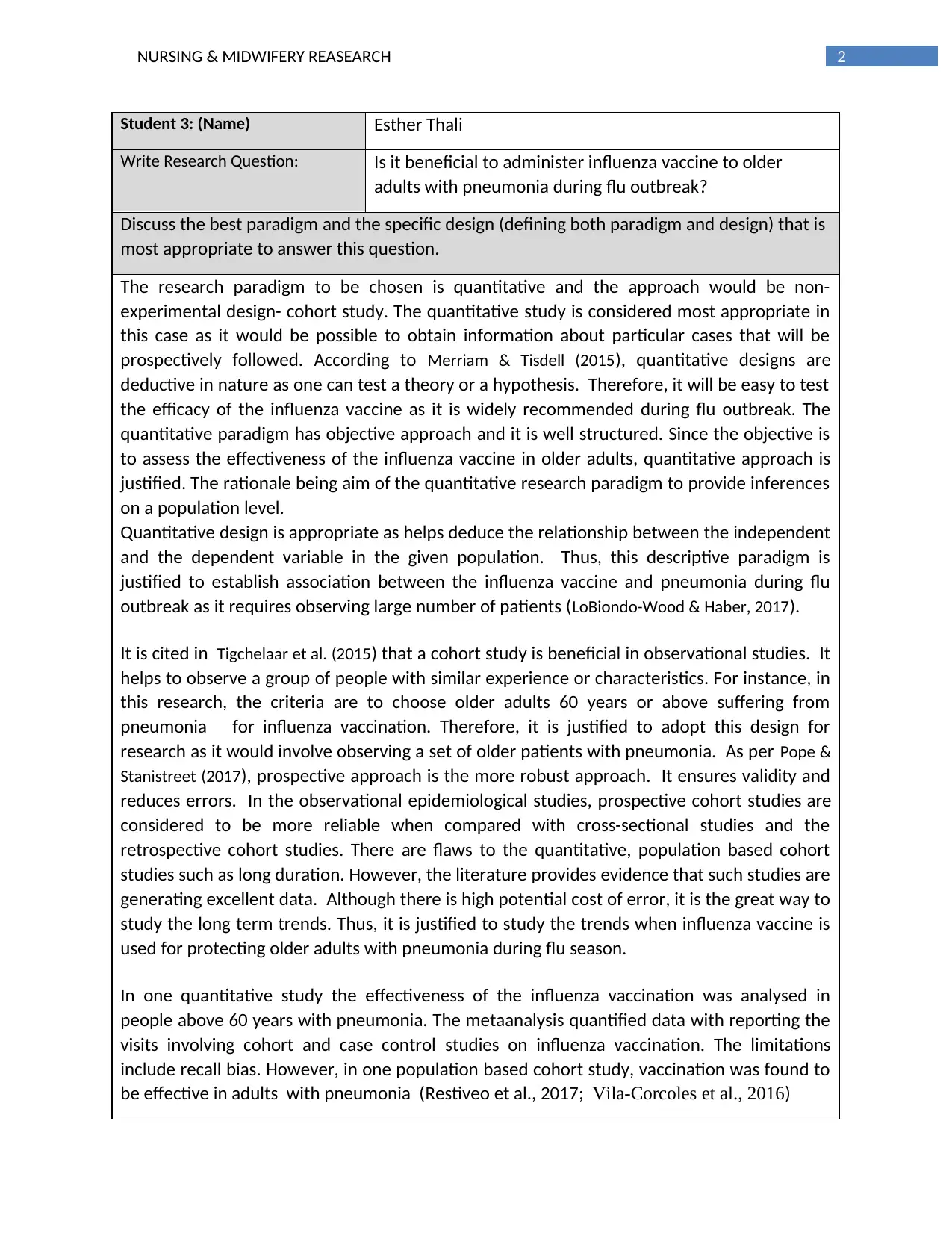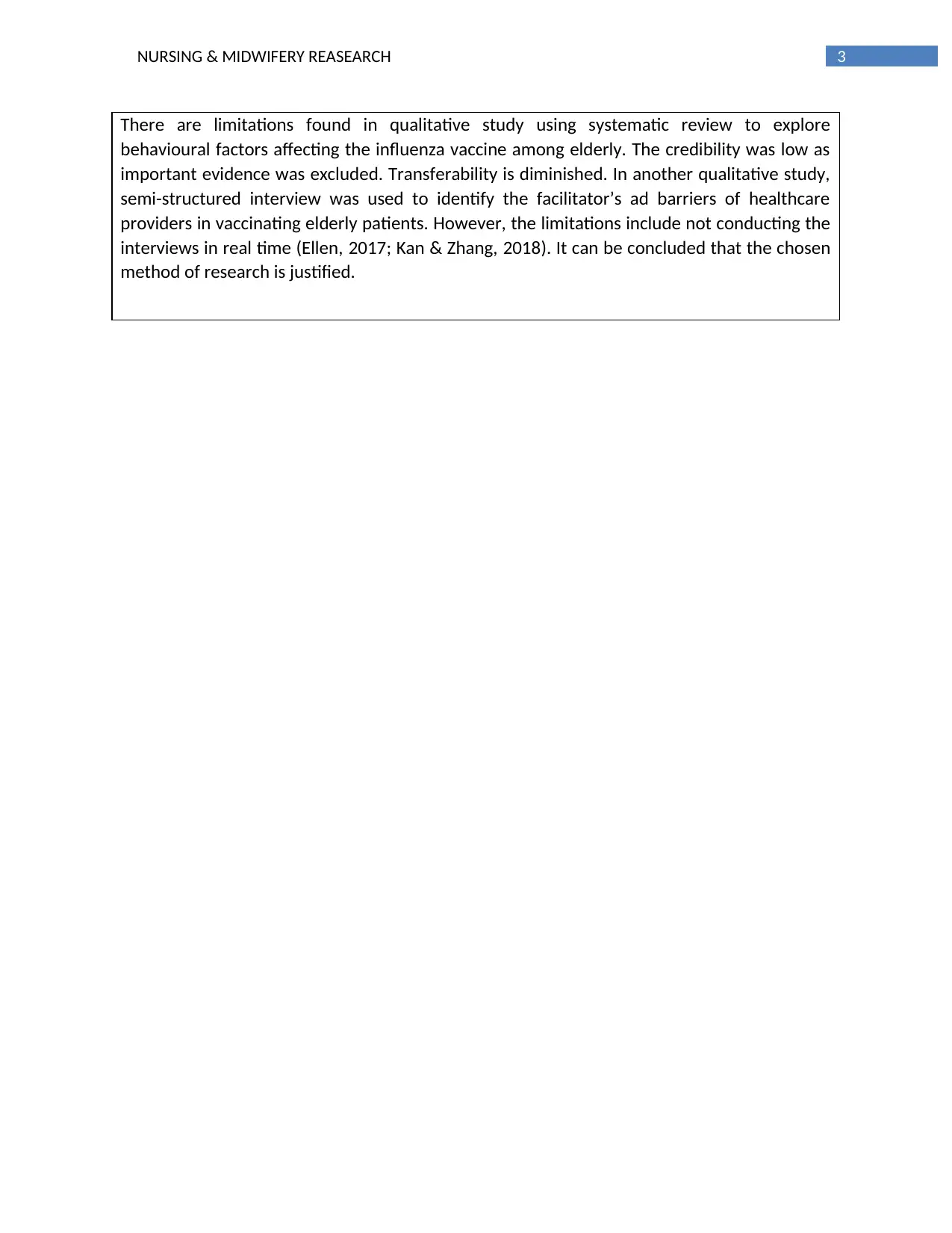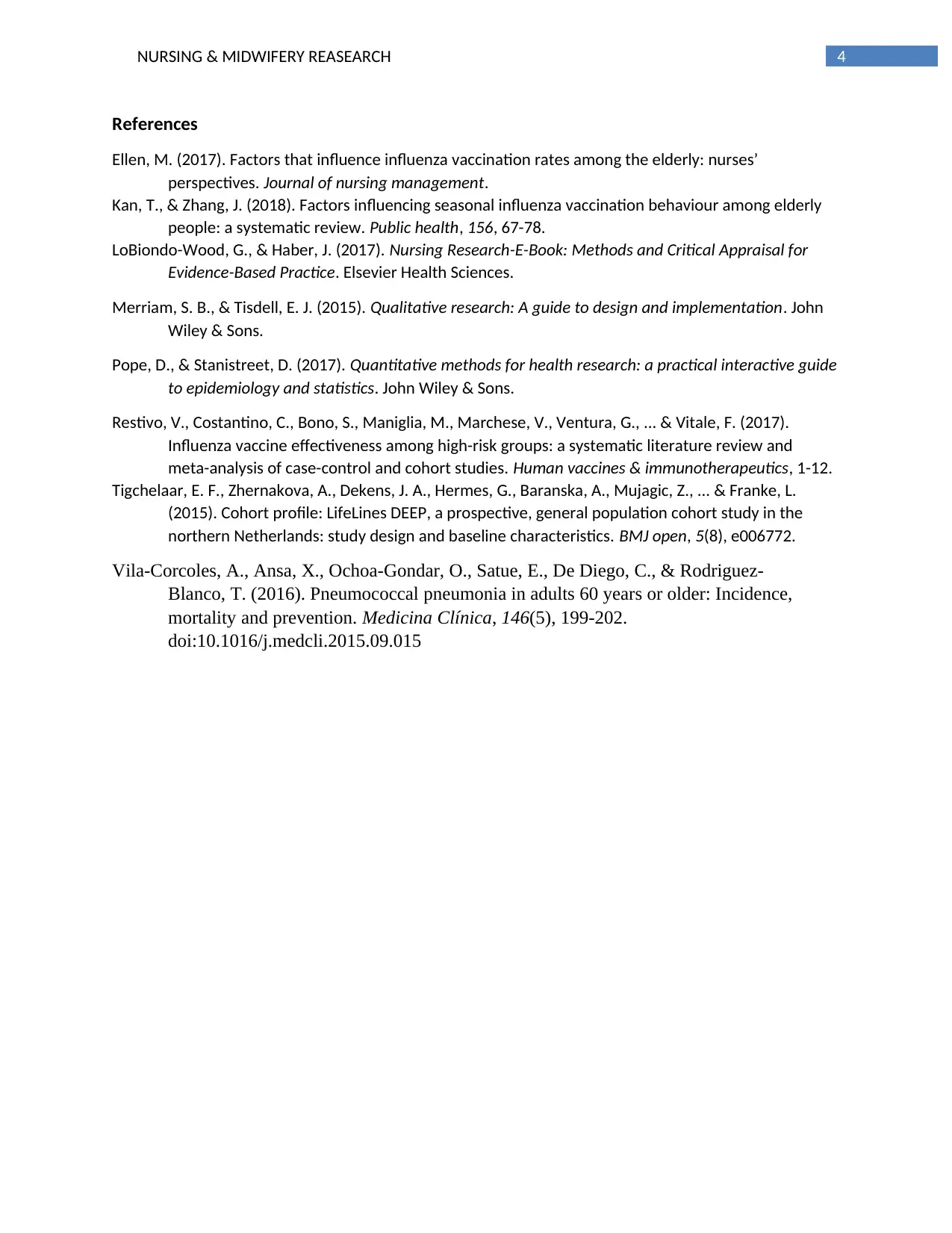Nursing & Midwifery Research: Influenza Vaccine for Pneumonia
VerifiedAdded on 2021/04/24
|4
|993
|27
Homework Assignment
AI Summary
This assignment delves into the research question of whether administering the influenza vaccine is beneficial for older adults with pneumonia during a flu outbreak. The student proposes a quantitative research paradigm using a non-experimental cohort study design as the most appropriate approach. The rationale emphasizes the quantitative paradigm's deductive nature, objective approach, and ability to assess vaccine efficacy by observing a large number of patients. The student justifies the cohort study's suitability for observing a group of older adults with similar characteristics and the prospective approach for ensuring validity and reducing errors. The discussion includes the limitations of cohort studies, such as long duration and potential costs, while highlighting their value in studying long-term trends. The student references supporting literature, including studies that analyzed the effectiveness of influenza vaccination in older adults with pneumonia, and contrasts them with the limitations of qualitative studies. The conclusion reinforces the justification for the chosen research method.
1 out of 4








![[object Object]](/_next/static/media/star-bottom.7253800d.svg)